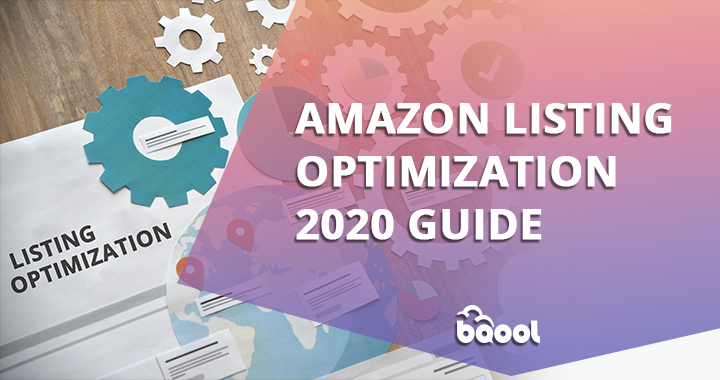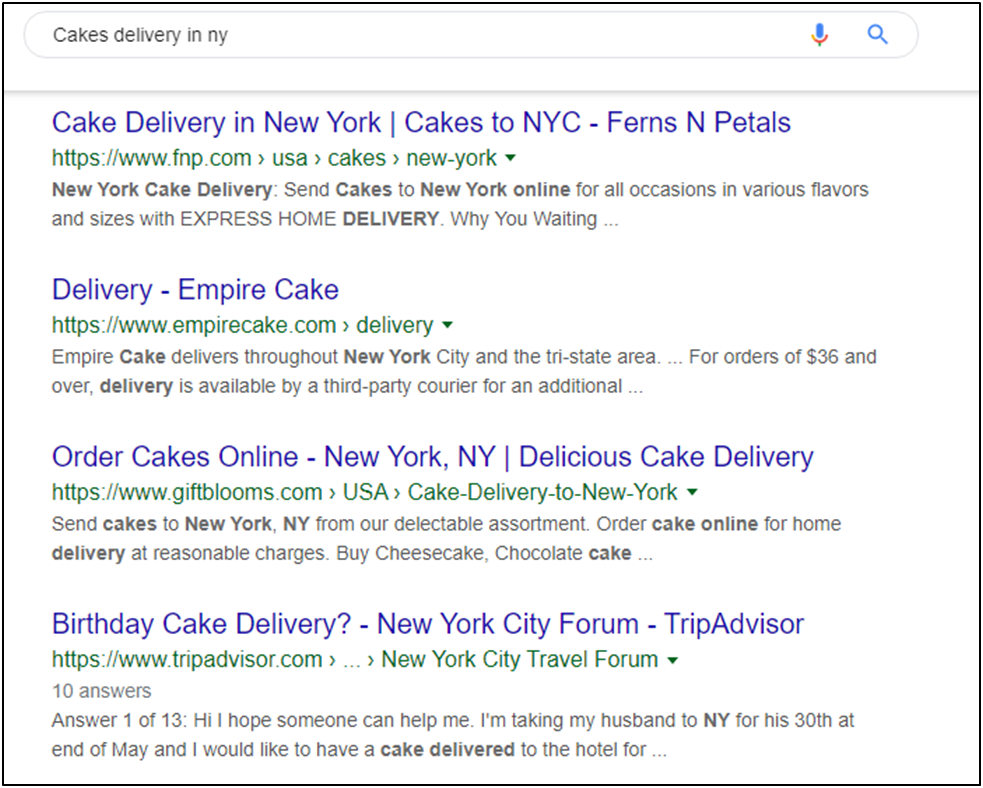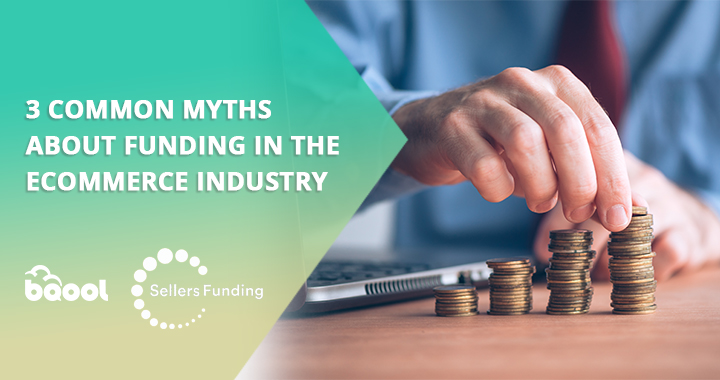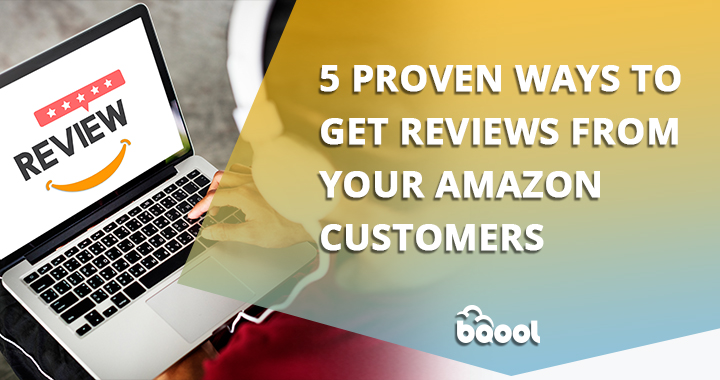The Winning Amazon Listing Optimization Guide

The formula is simple!
If you rank higher on Amazon, you’ll get more sales.
And to rank higher on Amazon, you need listing optimization. This guide to Amazon listing optimization 2020 will help you optimize your listing like a pro.
It’s no mystery that listing optimization has become even more important in the current phase of Amazon selling. With new sellers occupying different market places in Amazon, you need to play your cards right to stand by the tough competition.
Before we go into listing optimization and discuss the Dos and Don’ts, you need to know about the A9 Amazon Ranking Algorithm. In case, you already know about it, you’re welcome to skip to the next section.
What does the A9 Amazon Ranking Algorithm say about Product Rankings?
As with every search engine, Amazon has its own ranking algorithm that mainly works on the principles of CTR (Click through Rate) and CR (Conversion Rate). The products with more clicks and conversions are most likely to rank higher than the ones with fewer clicks and conversions.
Can you survive without optimizing your Amazon listings?
Expecting sales without listing optimization is like waiting for rain in the desert. And in this case, you’ll be waiting for the rest of your life.
Product Rankings on Amazon can only be achieved by optimizing your product in accordance with the A9 Amazon Ranking Algorithm.
Here is what Amazon says about listing optimization.
“It’s all about how our Algorithm understands a search query and match it with the relevant products. Therefore; we focus on the words and the intent behind those words. If a customer searches ‘Spiderman jacket’ we distinguish in their query the title: “Spiderman” from the category information: ‘jackets’ – “Amazon
There is one more thing you need to understand about Amazon. Like you and every other seller, Amazon also tends to increase its sales by maintaining a high reputation among buyers. It will not show a listing that has been ignored constantly by buyers as either they didn’t click it or haven’t put up a sale.
So how do we increase the CTR and CR of our product? This is what I am going to cover in detail that will enable you to optimize your listing like a pro.
How do we carry out a comprehensive keyword Analysis on Amazon?
The first step of Amazon listing optimization 2020 is about carrying out a competitor analysis that goes side by side with the keyword research.
Your competition is your way forward to success. This is a basic rule of thumb for marketing.
What are the keywords your competitors are ranking for and how much traffic they’re getting through it? These 2 questions will answer most of your questions about the level of competition in the niche you are trying to sell.
Like in Google SEO, our primary goal is to find out the high volume keywords along with the long-tail searches done by the users to search for similar products.
For that, you would be needing an adequate Amazon keyword tool that could drive you accurate results directly from Amazon. The keyword tool not only tells you the monthly searches of a relevant keyword but also defines the level of competition you have in that particular niche.
Products on Amazon can only be found if it contains all the search terms the user entered into the search bar. This is the catch where you need to be a little careful in selecting keyword phrases for your listings.
Amazon Keyword research can be divided into 2 categories: 1) Primary2) Hidden Keywords
As the name suggests, primary keywords are the most important ones which you should enter into your product title, description, and in your keywords.
While the hidden keywords are the ones that you enter at the backend but aren’t visible to the viewer. Note, don’t ever try to mislead Amazon by entering irrelevant keywords just to drive traffic; it can result in permanent banishment.
So now you know the basics, we’ll speed up with the practical process of optimization. These are 6 Pillars of Listing Optimization that are to be considered when reaching for high product rankings.
As seen from the past practices of top Amazon sellers and in accordance with the new updates, this is what should be considered:
- Title
- Description
- Bullet Points
- URL
- Images
- Reviews
Each of them carries significant weight in the product ranking algorithm of Amazon. Follow these practices to blow your competitors in your niche.
Optimizing Product Title for better visibility and CTR
When you search for anything on Google, you click on the link that looks more relevant to you. And that relevancy is reflected by the title. Similarly in Amazon, title is the most crucial because it directly affects the CTR of your product.
Moreover, it is an important product ranking signal of Amazon which can’t be ignored.
However, writing titles for Amazon and Google is different.
In Google, you write an engaging tile to enhance the Click-through rate of the product/page.

In Amazon, you don’t have to worry about making it engaging. Here, you need to incorporate as many keywords as possible to enhance your chances of showing against the search query. Though Amazon allows up to 200 characters per title, I recommend sellers not to exceed the 80 characters mark.

The rule for writing product title in Amazon listing is:
Brand name + Product Name + Features
There are a few additional things that should be considered when writing the product title.
- Always capitalize the first letter of every word
- Prefer writing numbers in the numerical form: When writing numbers, for example, seventeen kitchen knives, write it like 17 kitchen knives
- Mention the color of the product
- If relevant, mention the size and measurements
- Use comma while mentioning details
Optimizing Product Description to Increase visibility
Content can do wonders for you and can be the worst nightmare as well. That’s why the 2nd most crucial aspect of the ranking algorithm is the product description.
Like in every other search engine that existed, the product description should be equipped with rich keywords along with the long-tail searches that could further target relevant queries.
If you fail to appear on a relevant long-tail query, you should prefer checking your product description. So how we optimize it?
Ask yourself this question; why would anyone read product description? The obvious answer would be because they want to make sure that what they’re buying is what they actually need. They want to find out about the features and qualities of your product.
In short, this is where you need to brag about your product.
After product photography and reviews on Amazon, descriptions are the 3rd most effective thing that can increase your conversion rate to a much larger extent.
When writing a product description, think your listing as a curb appeal for a house. Make it engaging but it should be relevant at the same time. I discourage sellers to use high vocab and synonyms in their descriptions as they don’t help.
Write in easy English, let your customers know about your product and why should they buy it. If you’re offering anything extra along with your product, do mention it.
Apart from making it engaging and easy to read, this is another place to include as many keywords as possible to appear on relevant search queries.
Take care of these things in your product description to increase your conversion rate:
- Read your competitor description. Then, try to write better content with better reasoning.
- Why should a customer buy your product? Develop the need for your product even if you’re selling soft drinks
- Avoid over bragging. This negatively impacts the credibility of your brand and product.
- Point out the main features that should be convincing and accurate. What if I lie? You can, all you will get in return is a bunch of negative reviews which will throw you out of the competition.
Write in short paragraphs because they are more readable.
Optimizing Bullet Points to Rank Higher on long-tail searches
Good content is incomplete without a bunch of rich bullet points.
While many won’t make it past the title and description, so this is where you need to make your content concise and clear – it is an ideal place to highlight the key features of your product.
If you’re offering something extra with your product, bullet points are the ideal place to fit it. As I said before, avoid using synonyms and high vocab because they don’t just really work.
When writing bullet points for Amazon, here are a few things to remember:
- Use rich keywords in the bullet points. If you have already used a certain keyword in the description, there is no use of placing it again because there isn’t any concept of keyword density in Amazon.
- Please do mention warranties and product guarantee in the bullet points
- Any instructions or usage should be defined in the bullet points.
And include all the benefits that you think can convince the viewer in making a purchase
Optimizing the URL in accordance with the Ranking Algorithm
URL carries significant weight in the product ranking algorithm and like in Google Seo, the criteria for writing URL is the same: Use the keyword in the URL, that’s it!
Optimizing Product Reviews on Amazon to increase Sales
Reviews are the fuel of your Amazon business. In fact, this is what everyone is always concerned about.
Back in the days, when sellers were able to get reviews easily through paid programs and family members, it was very easy. However, things have changed because Amazon has made strict policies to restrict fake reviews that it has mainly done to increase its value and trust among its customers.
Many Experts who provide Amazon Seo services will tell you that reviews aren’t a ranking signal in Amazon. Without getting into the complexity of the debate, it is an established fact that products with more positive reviews are very likely to have a higher CR (conversion rate).
The healthy rate of reviews is between 4 and 5. Low rankings and bad reviews are the biggest downright factor of Amazon selling because it steals away the confidence of the buyers and leaves you with just few impressions.
Even if your product is ranked on the top, the bad reviews will certainly reflect your conversion rate and sales.
So what do we mean by optimizing product reviews on Amazon?
Here are 2 things you should do to optimize your product reviews on Amazon.
- There is no silver bullet to prevent bad reviews completely but still, they can be reduced. If your bad reviews refer directly to the quality of your product, you surely need to make some changes. Moreover, reading your competitor reviews will also answer most of your questions.
Earn product reviews legally to reduce the impact of bad reviews. There are countless methods to gain positive reviews on Amazon which will eventually increase your CR and will build confidence between you and your customer. One of the most efficient methods to gain product reviews is through Amazon Email Automation which makes use of automated email campaigns for Amazon merchants.
Optimizing Product Images to Increase the Click-through Rate on Amazon
We all know the importance of product images on Amazon as they act as a convincing power for a customer to make a purchase. And like for every other eCommerce, product photography has an emerging role that’s why it has become even more important.
So what does optimizing product images mean on Amazon?
The use of high-quality images. Lifestyle and info-graphics, zoom-in images, and dimension images are few of the significant optimization that you need to carry out.
Key Takeaways
The rules for listing optimization haven’t changed a lot, but I believe that reviews and Titles will become even more effective in the coming updates. Because Amazon has been working constantly on improving its reputation so it may start giving more value to the reviews and titles than what it is giving now.
- Keyword research is the backbone of Amazon listing optimization as without it you can’t really move to the next step. There are countless keyword tools online who provide real-time data scrapped directly from Amazon; you can take the help of them in your keyword research.
- Don’t over-optimize your title. I recommend seller not to exceed the 80 characters mark when optimizing their product title.
- Very few people will pass the title to read your description and bullet points, so it’s better to make it concise and clear.
- Make your URL short but with your keyword added.
- Optimizing reviews have 2 parts: understanding the bad reviews pattern and earning positive reviews through legal channels. Without good product ratings and reviews on Amazon, success is inevitable.
- Take care of the resolution and quality of your images on Amazon. Moreover, the use of high-quality images. Lifestyle and info-graphics, zoom-in images, and dimension images are few of the significant optimization that you need to carry out.
As an Amazon seller, all you need to do is to make a winning Amazon Seo strategy and crack the A9 Algorithm.
This is a Guest Post by AMZ One Step.








